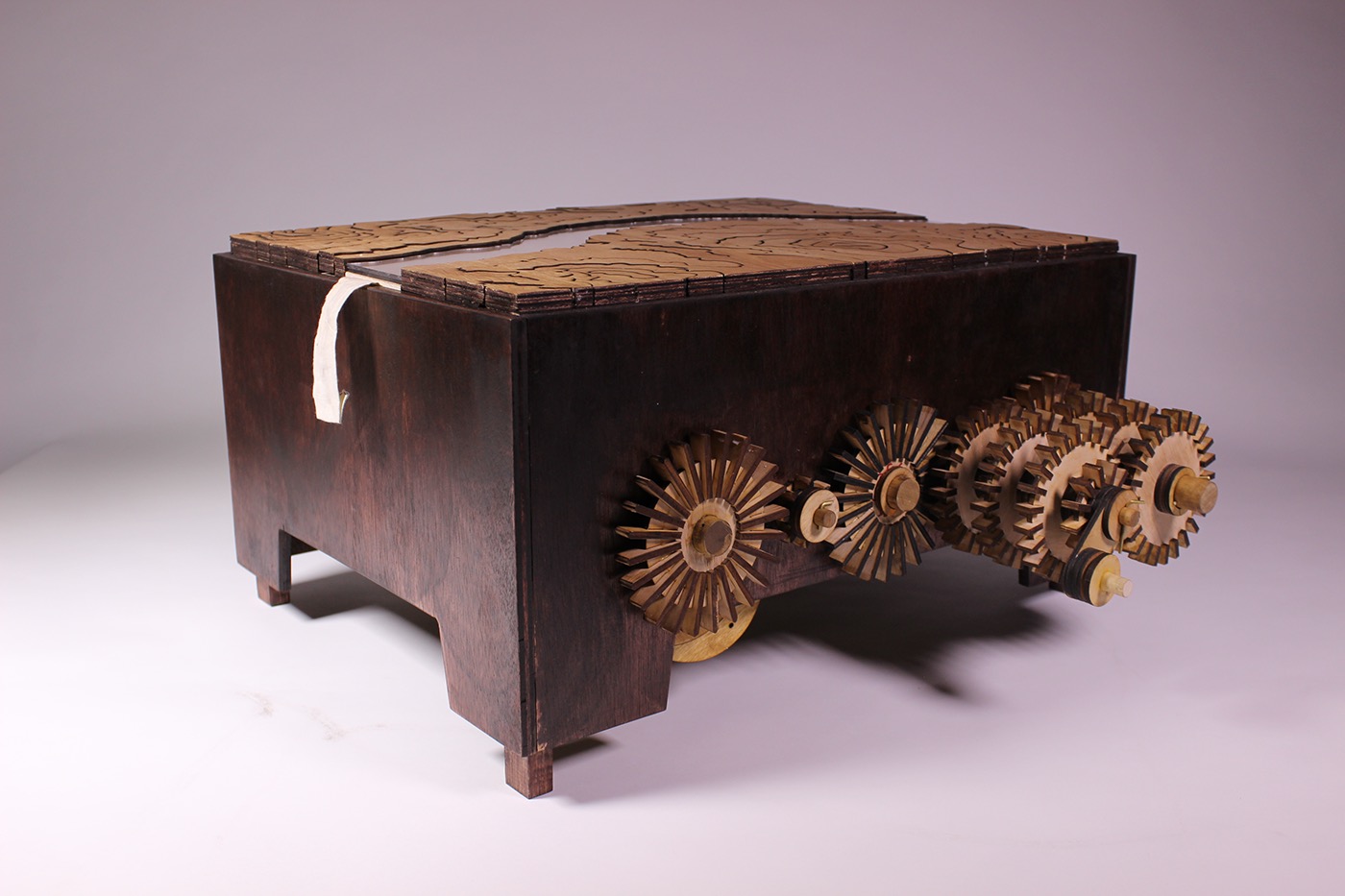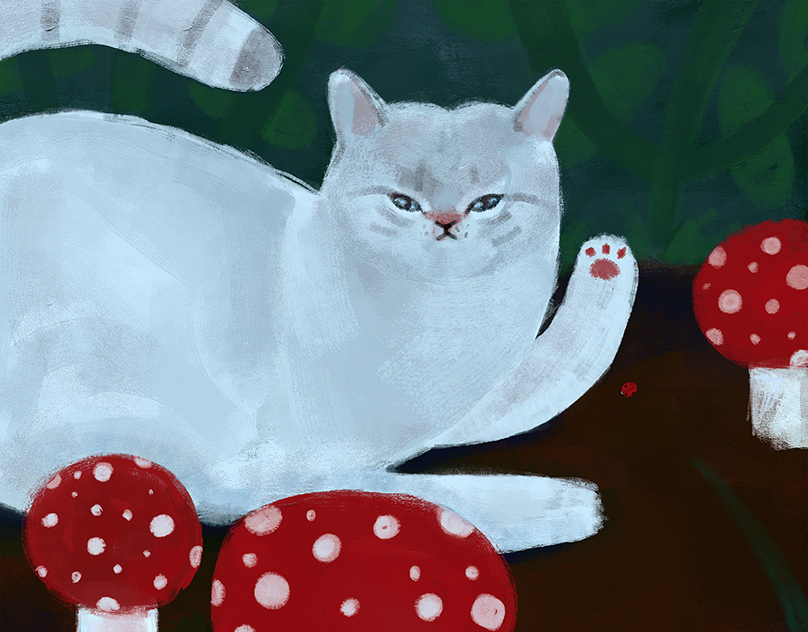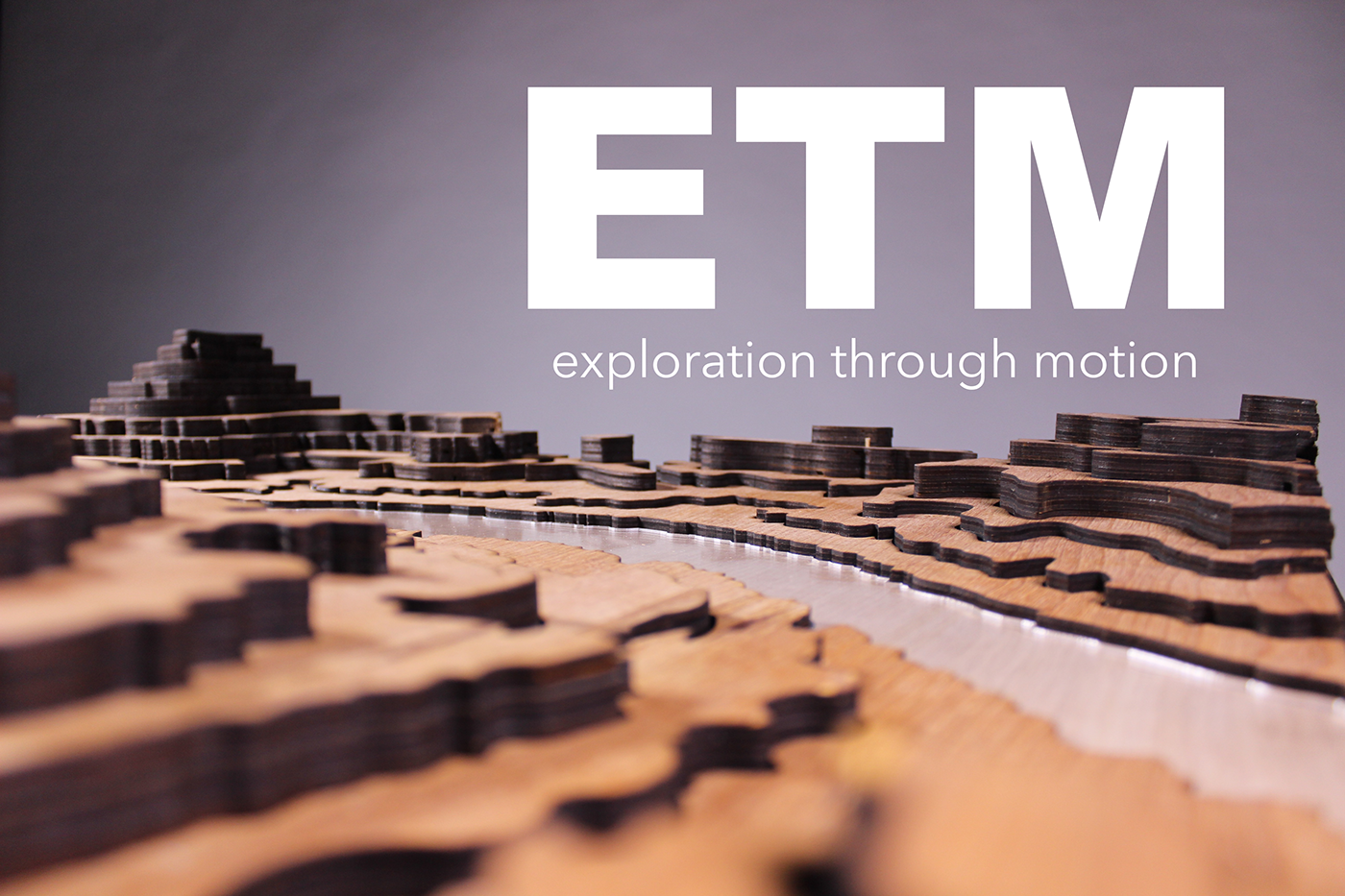
The Brief
We were asked to travel to the Philadelphia Art Museum and pick a painting that would be developed into a machine integrating the 7 Da Vincian principles creating a visually appealing show.
We were asked to travel to the Philadelphia Art Museum and pick a painting that would be developed into a machine integrating the 7 Da Vincian principles creating a visually appealing show.
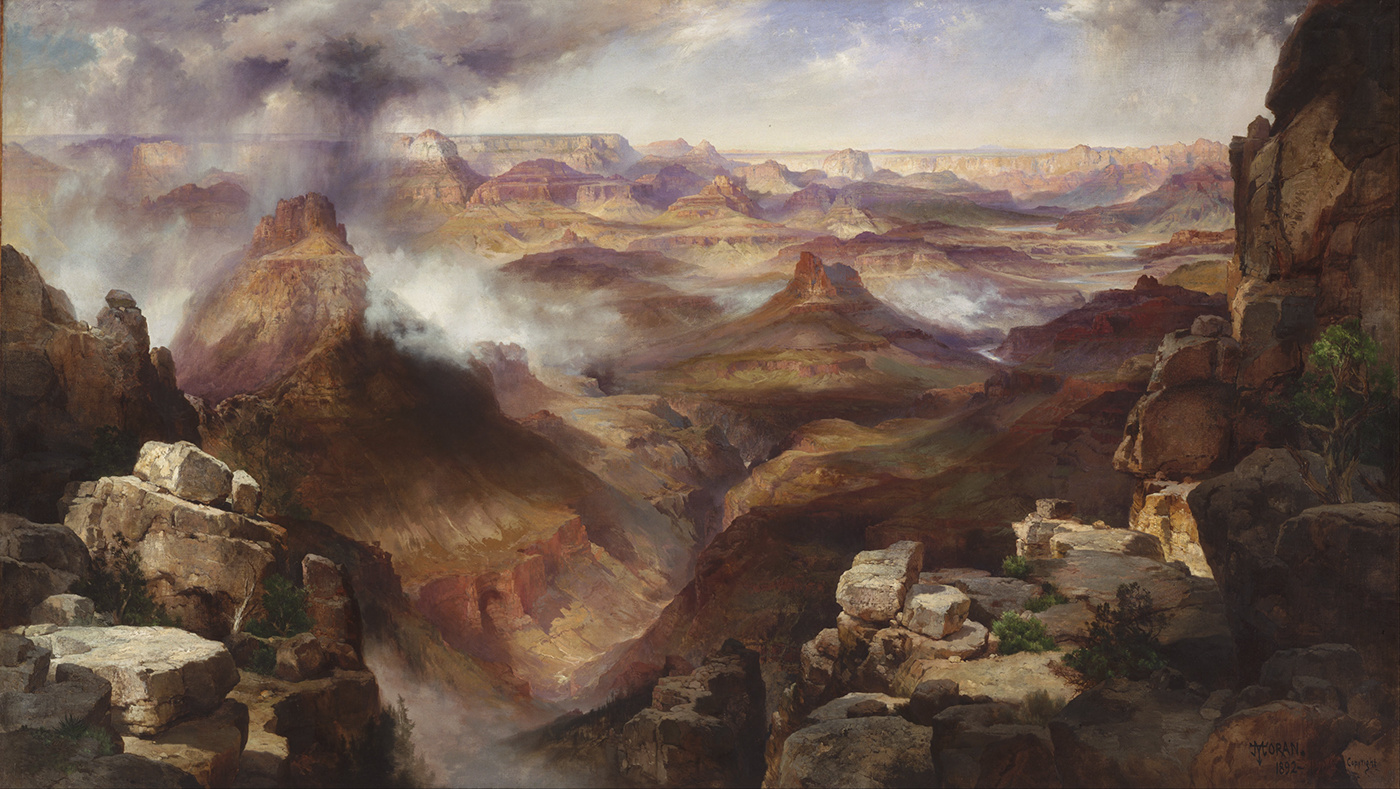
Our painting was “Grand Canyon of the Colorado River” by Thomas Moran selected from Gallery 111 in American Art. We were inspired by the depth in the painting as well as the underlying tone of exploration in the painting.
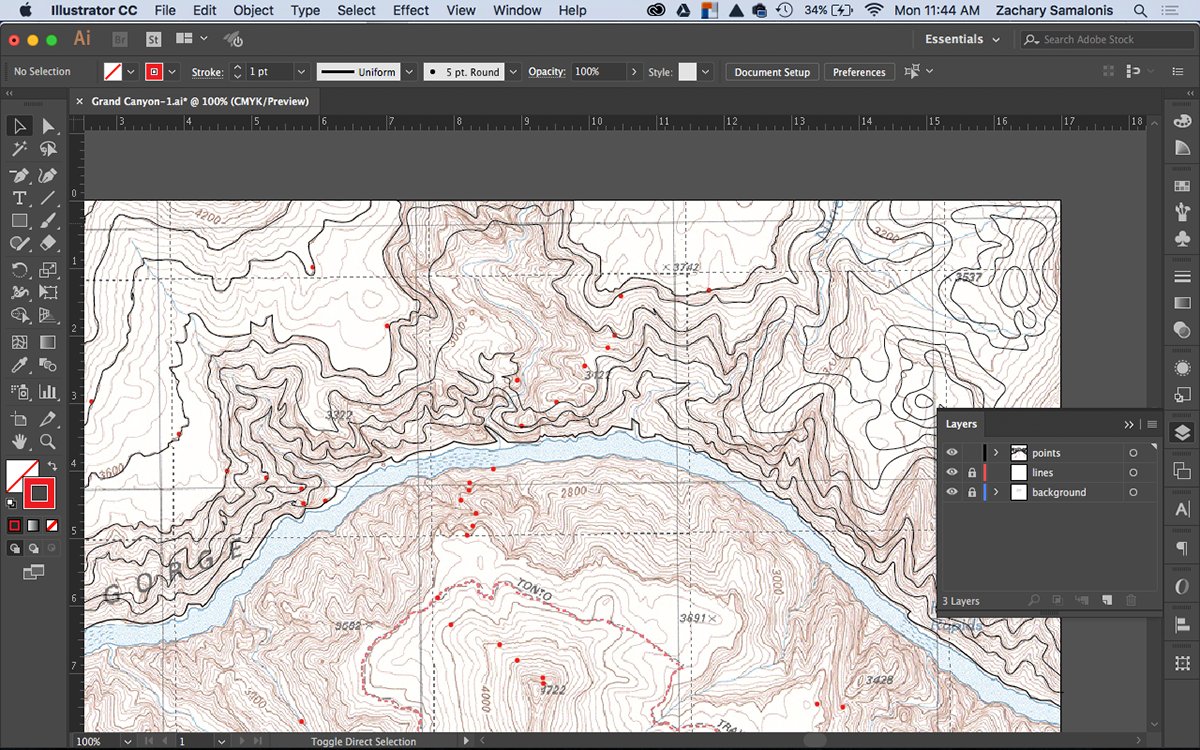
We started by researching the canyon itself, looking at topographical maps and the layout of the river and how it shaped the canyon. We explored with different sections, dividing the landscape into a grid. After consideration of the story we wanted to tell we selected the bend in the river and the surrounding structures.
We placed the map into Adobe Illustrator and began penning the sections of the map we wanted to raise. We knew that we wanted to show the vast height of the canyon and include details, but at the same time we had to set a limit. We also created a grid that would sit underneath the map that would direct the vertical dowel movement.
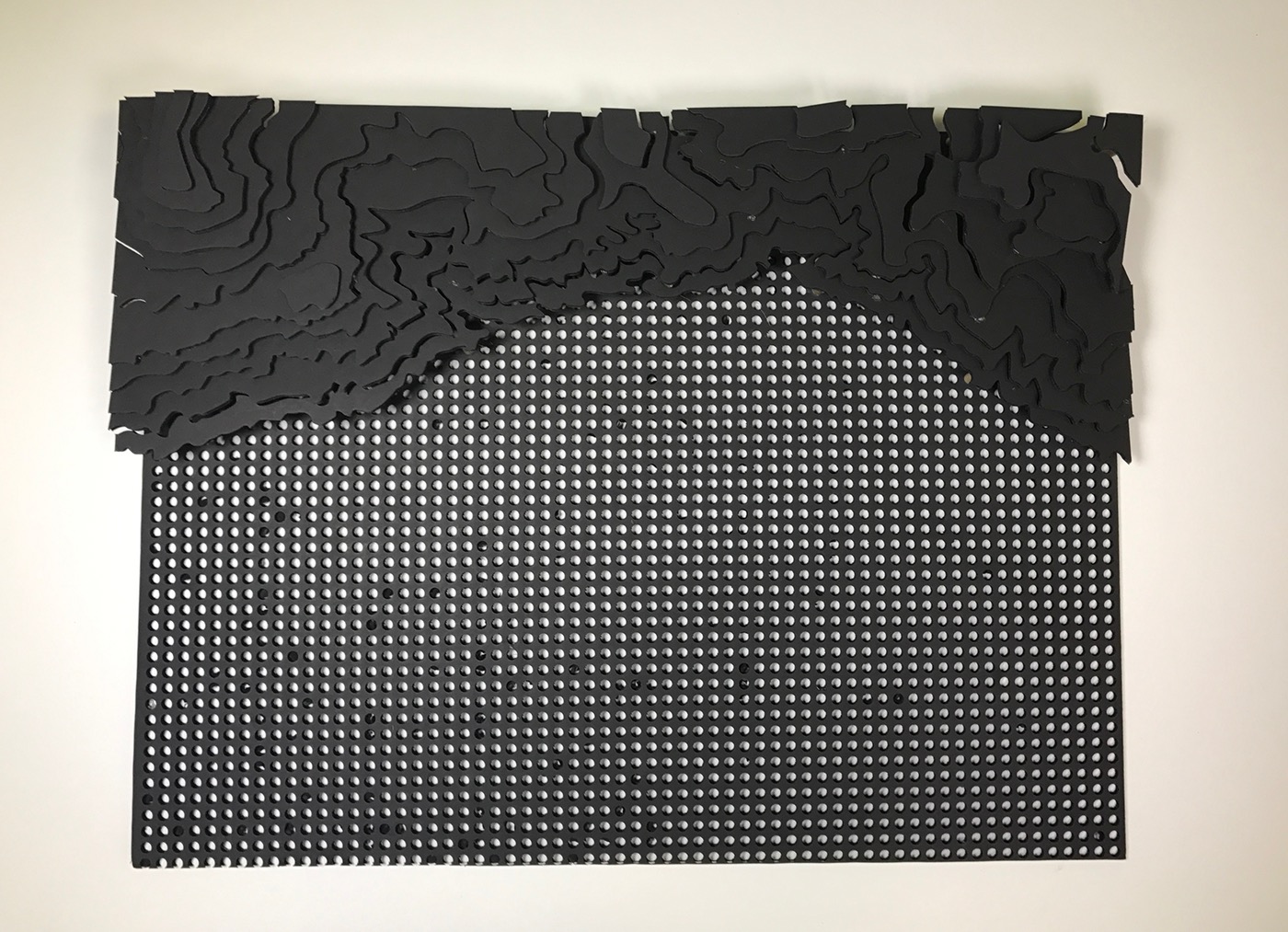

We created a foam model as a proof of concept. While this was not functional, it allowed us to experiment with dowel placement as well as the heights for each layer.
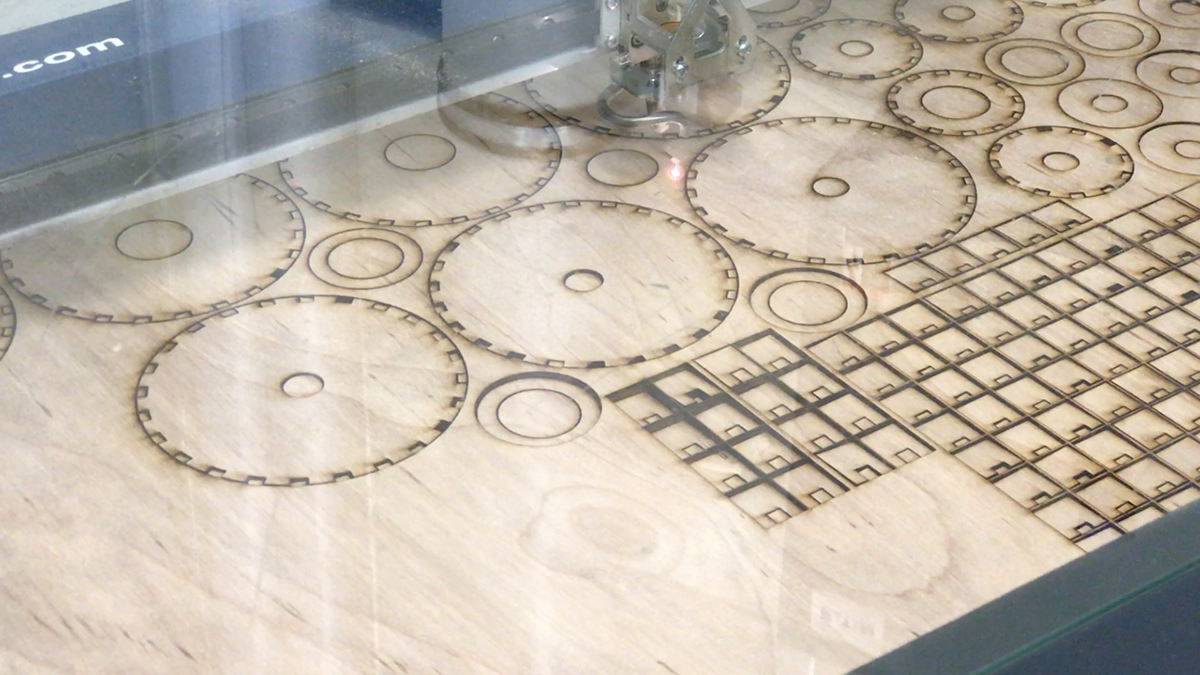
Simultaneously we were working on the internal structure and the mechanisms on how the map would rise and fall. Based on the mechanics of a manual transmission, we would design a visual gearbox that would include a reduction system, to help decrease the torque produced by the sheer weight of the map as well as rise the map slowly, to help show the passage of time.
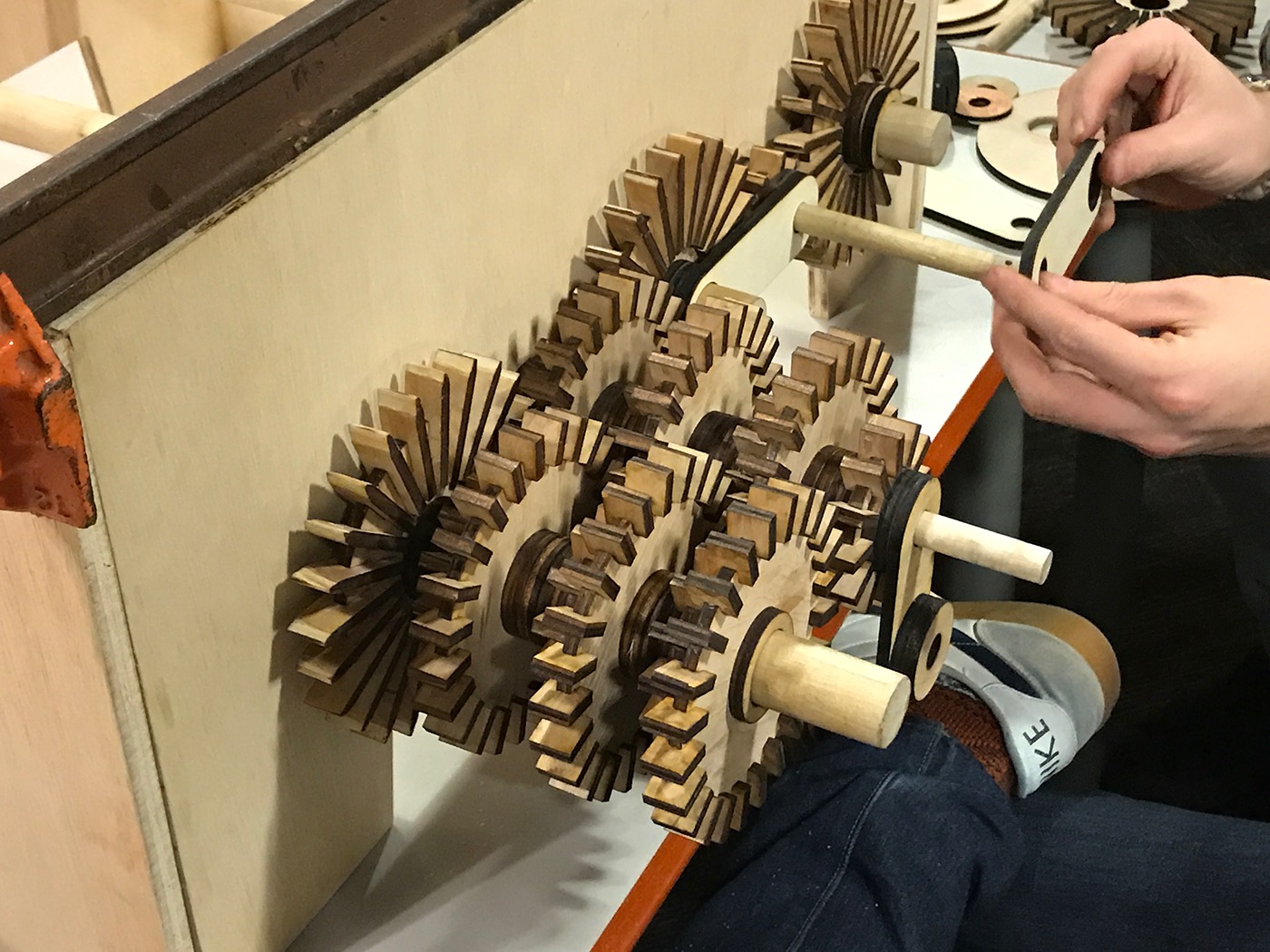
These gears were “paddle” gears, something Davinci had in his time. They were designed in Adobe Illustrator and laser cut. After assembled 64 turns of the handle would raise the map to completion.
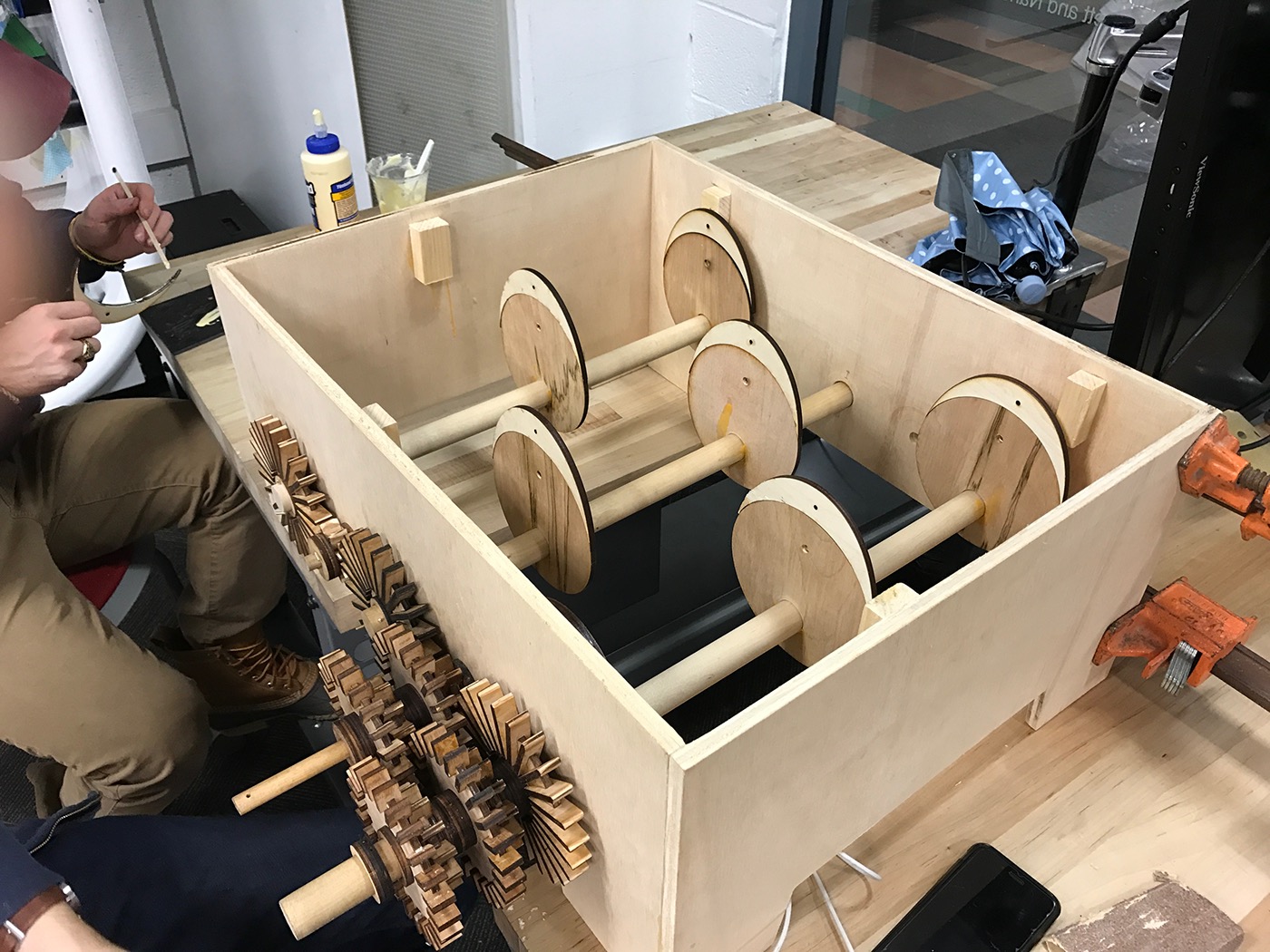
Cams inside the box underneath the map would be the mechanism that would do the heavy lifting. These would push up a masonite platform that would push up the dowels. They were designed in Adobe Illustrator and laser cut as well.

The vectorized map went under several revisions. After the first laser cut, we discovered too much friction was in between the pieces, so while it looked the way we wanted, it didn't move at all. We went back to the computer and edited the file and after removing some layers, stripping away some detail and adding tolerance to the pieces we had a map that moved.
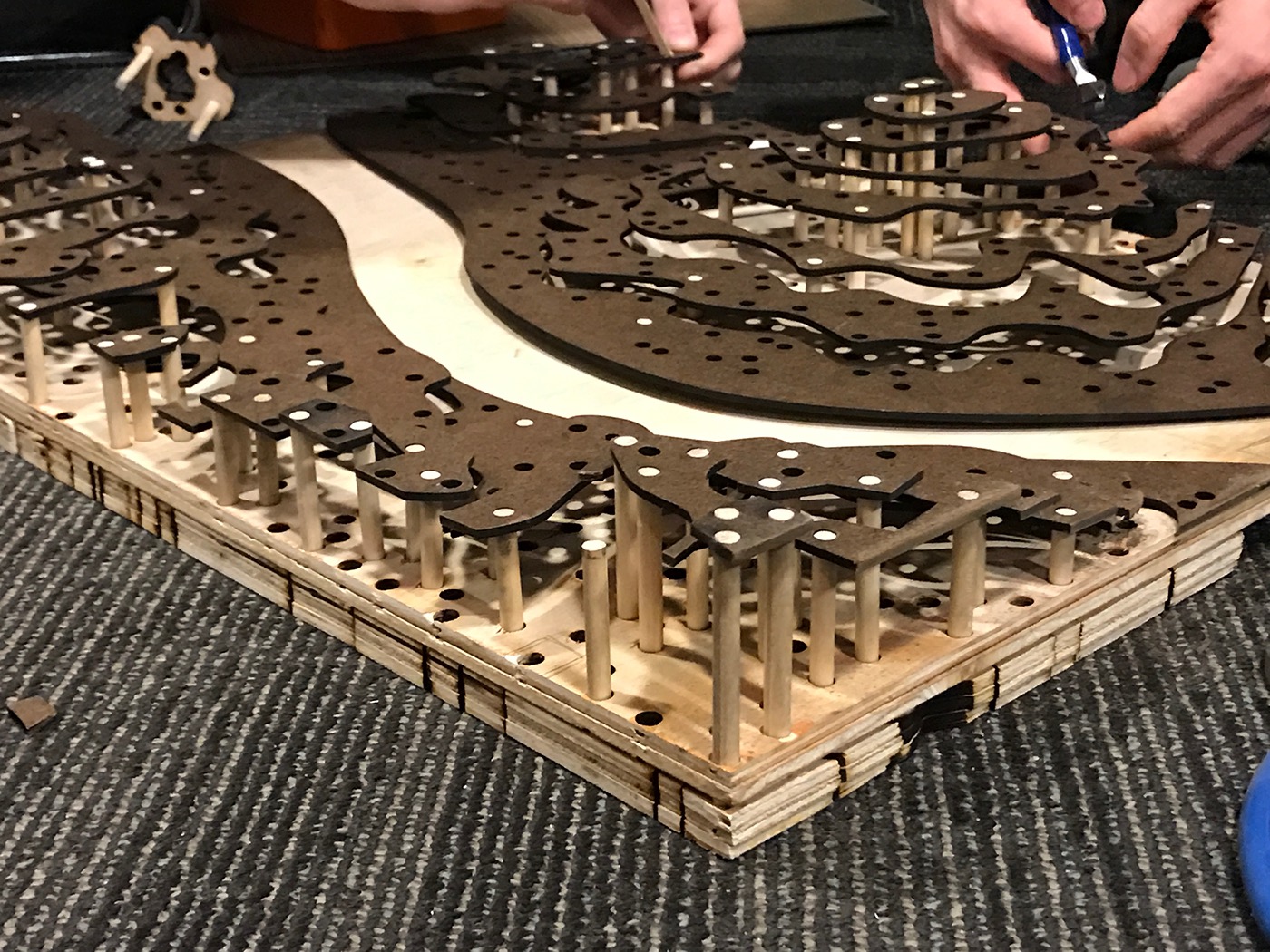
The third iteration came much later in the process. This was a bare bones map that was created to help align the dowels at a 90 degree angle, to help with the vertical motion. This was created out of masonite--light yet sturdy.
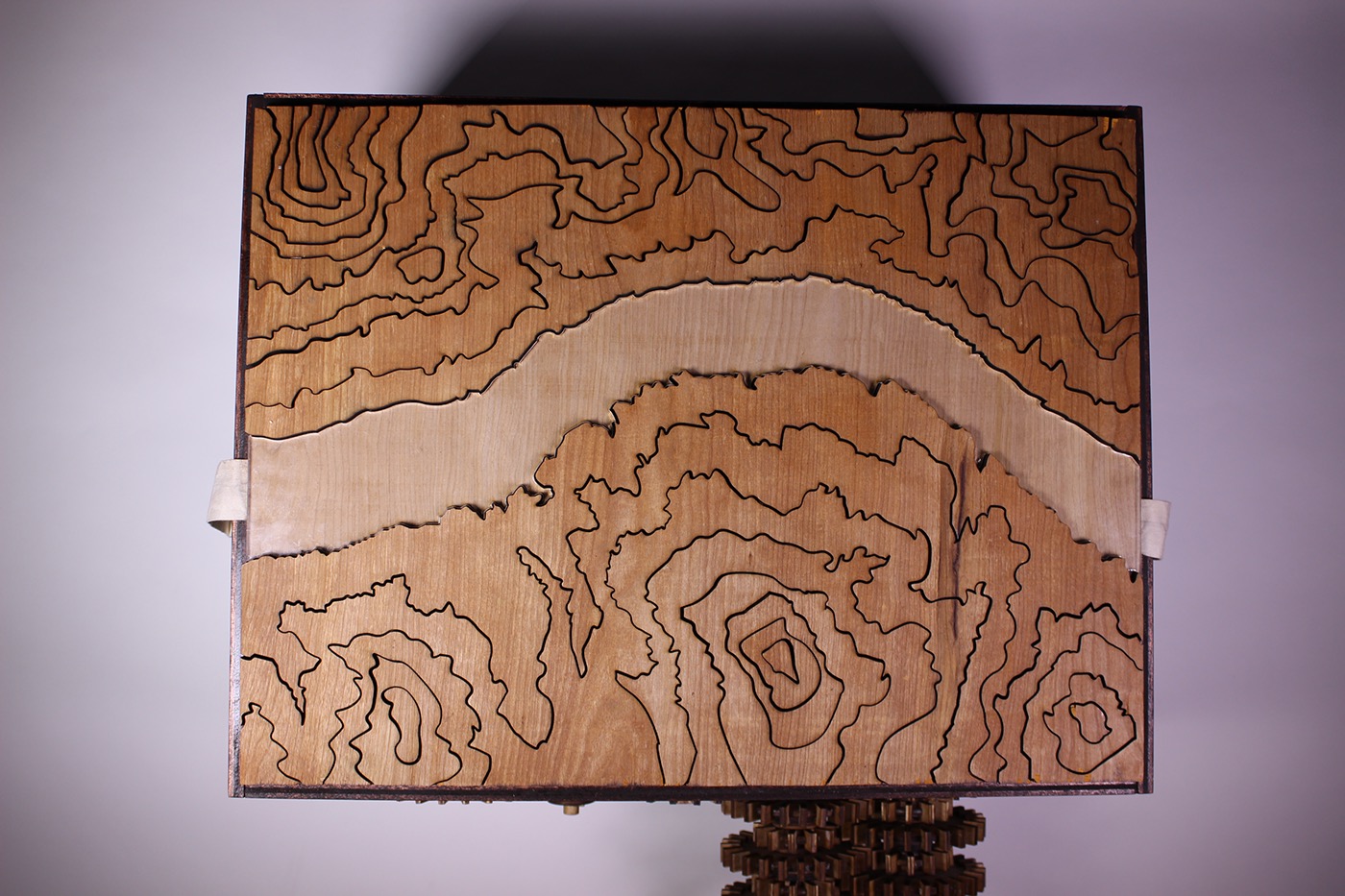
The map starts off flat and flush with the top of the box.
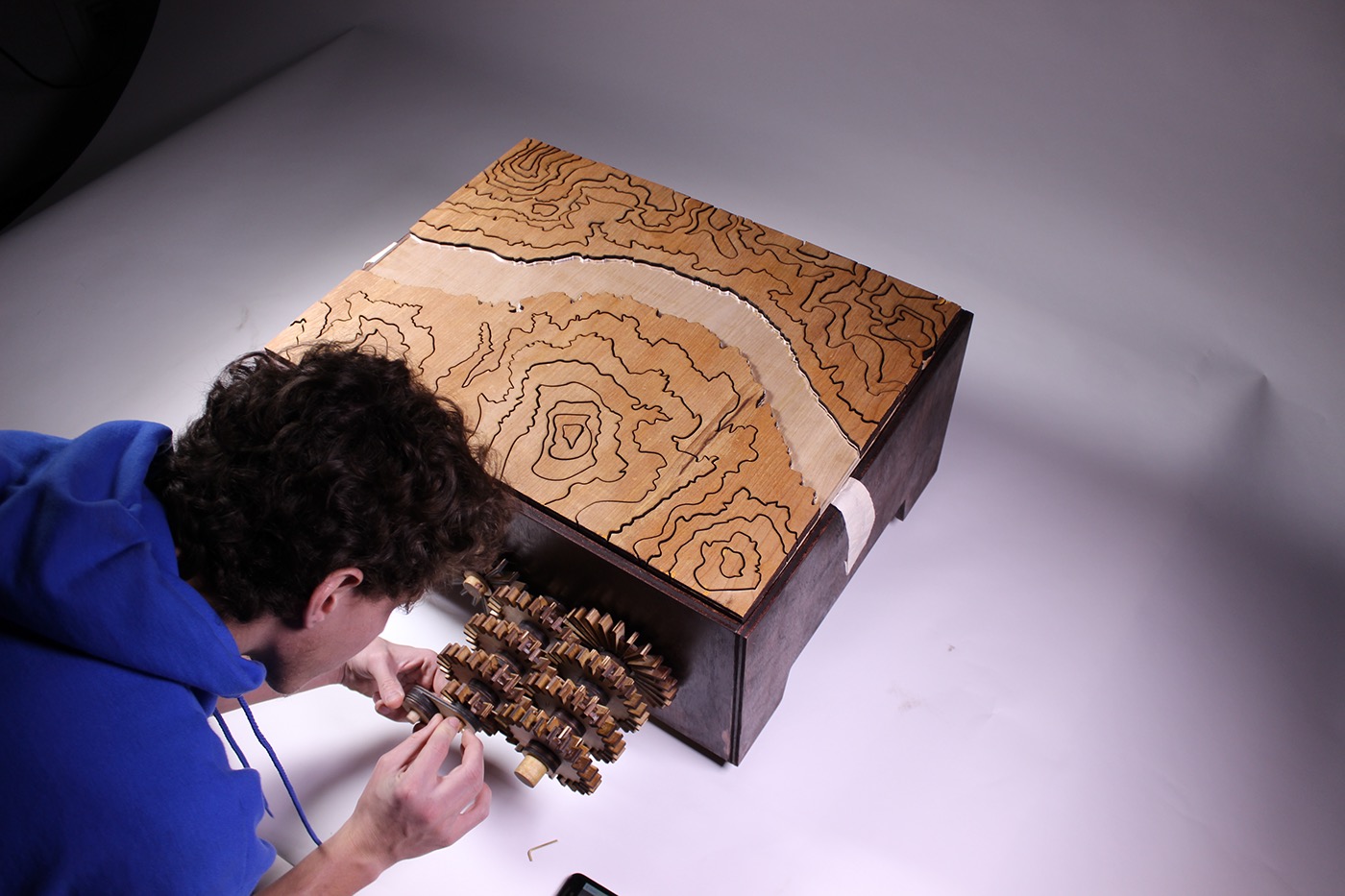
The reduction system is slid onto the main shafts connected to the interior cams.
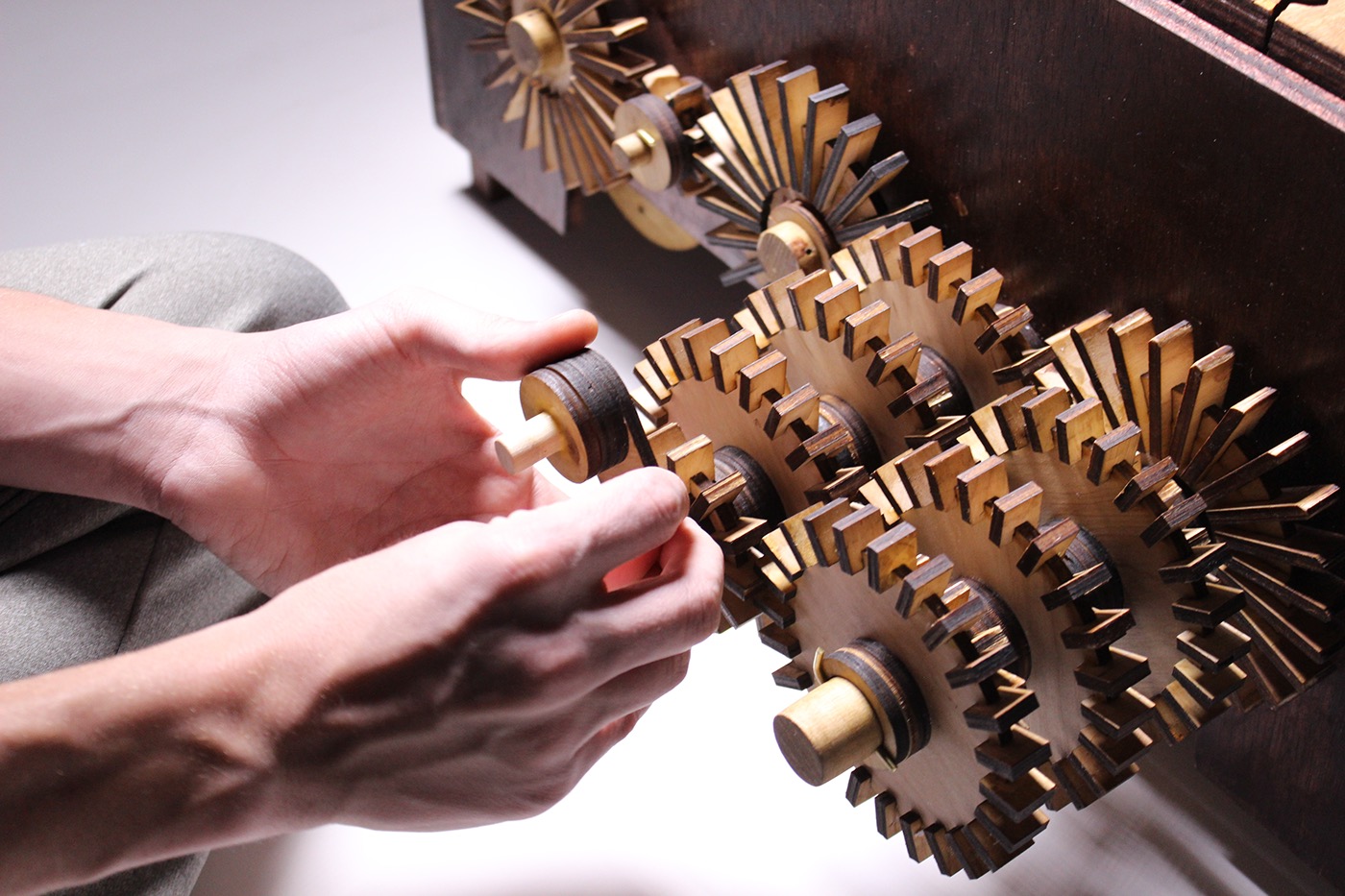
The final drive handle is added and secured with brass pins to ensure a tight fit.
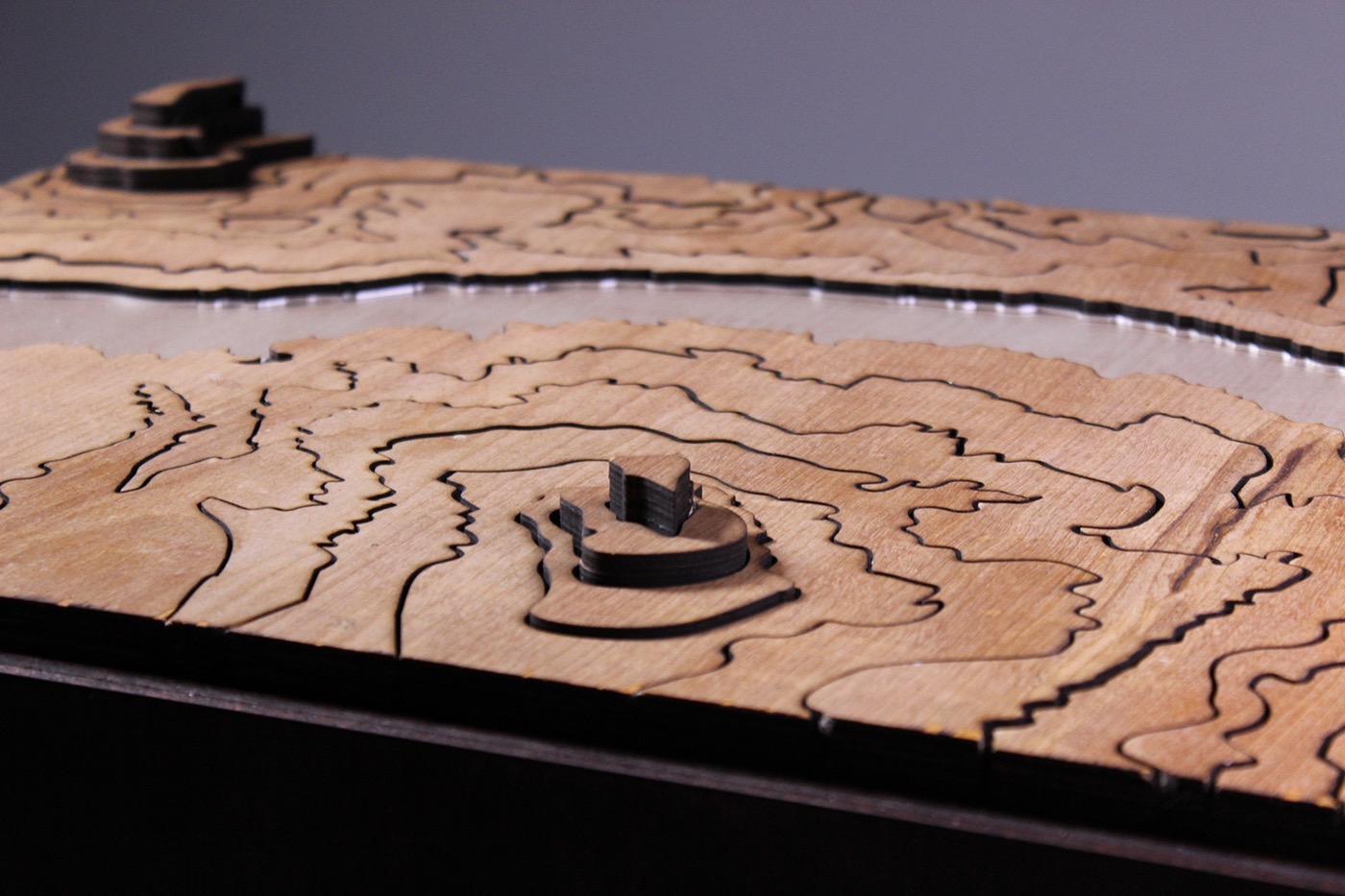
Turning the gears allow the map to slowly reveal itself. The design allows the map to to stop at any layer if the users chooses to do so.
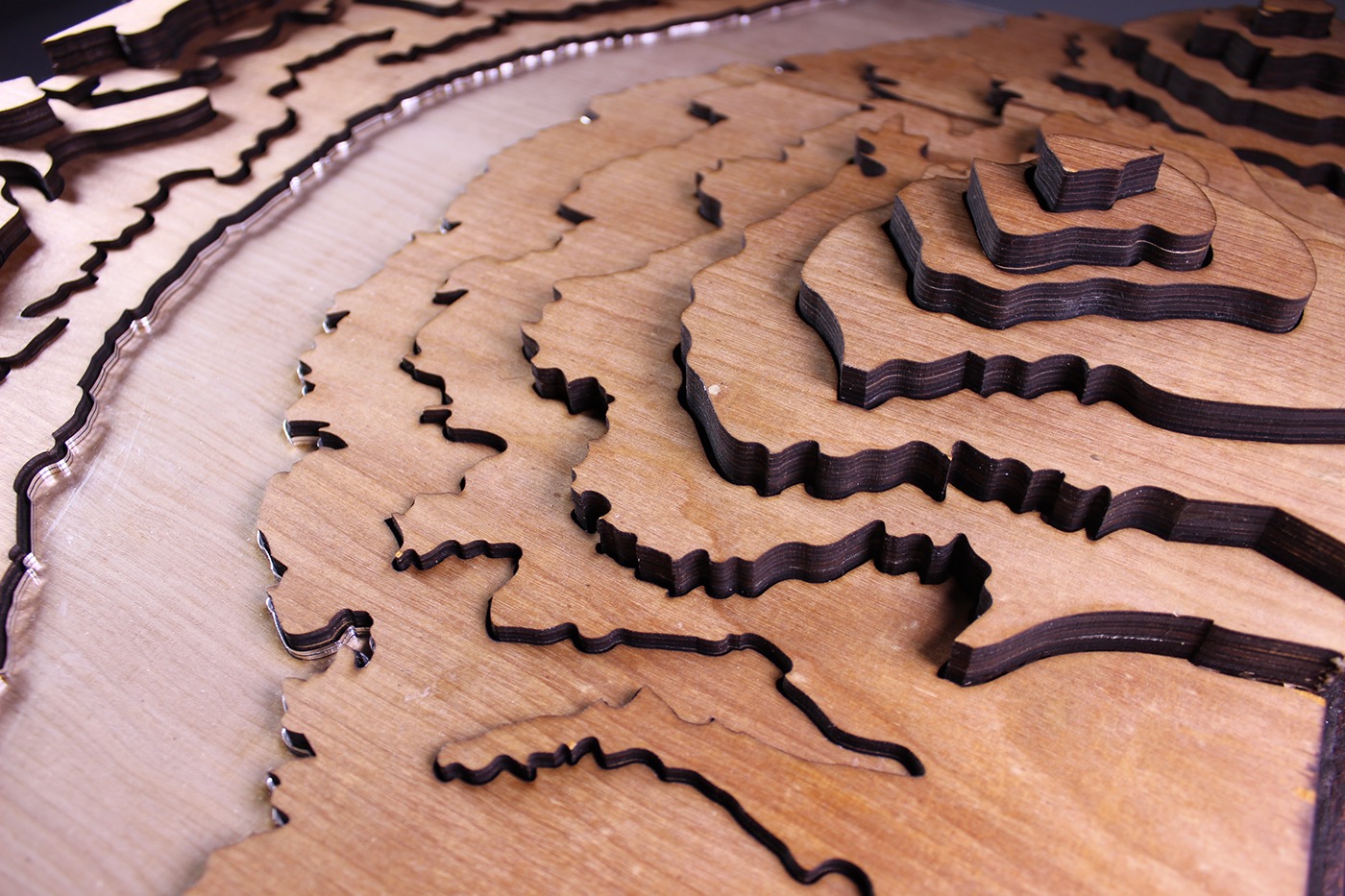
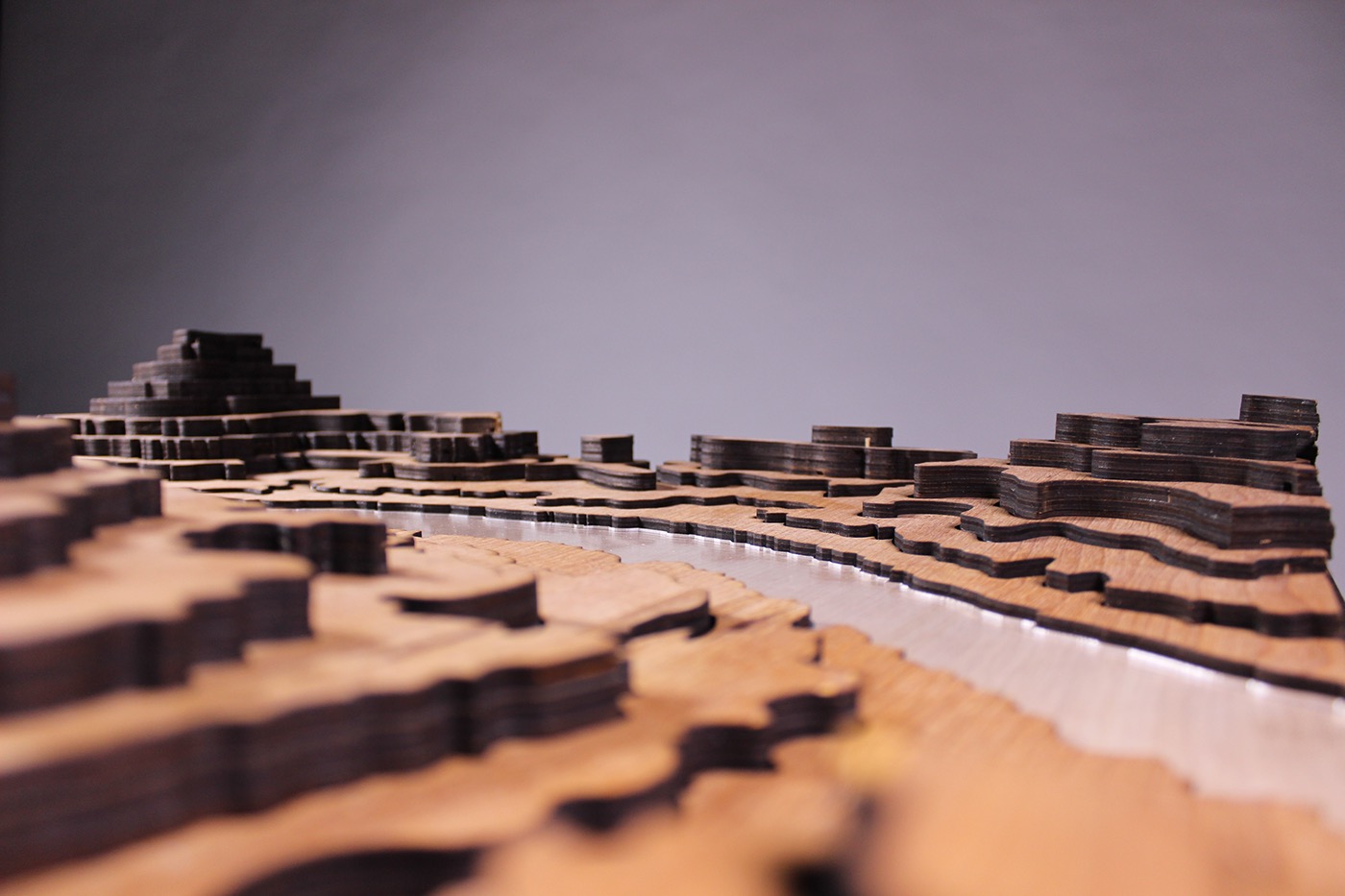
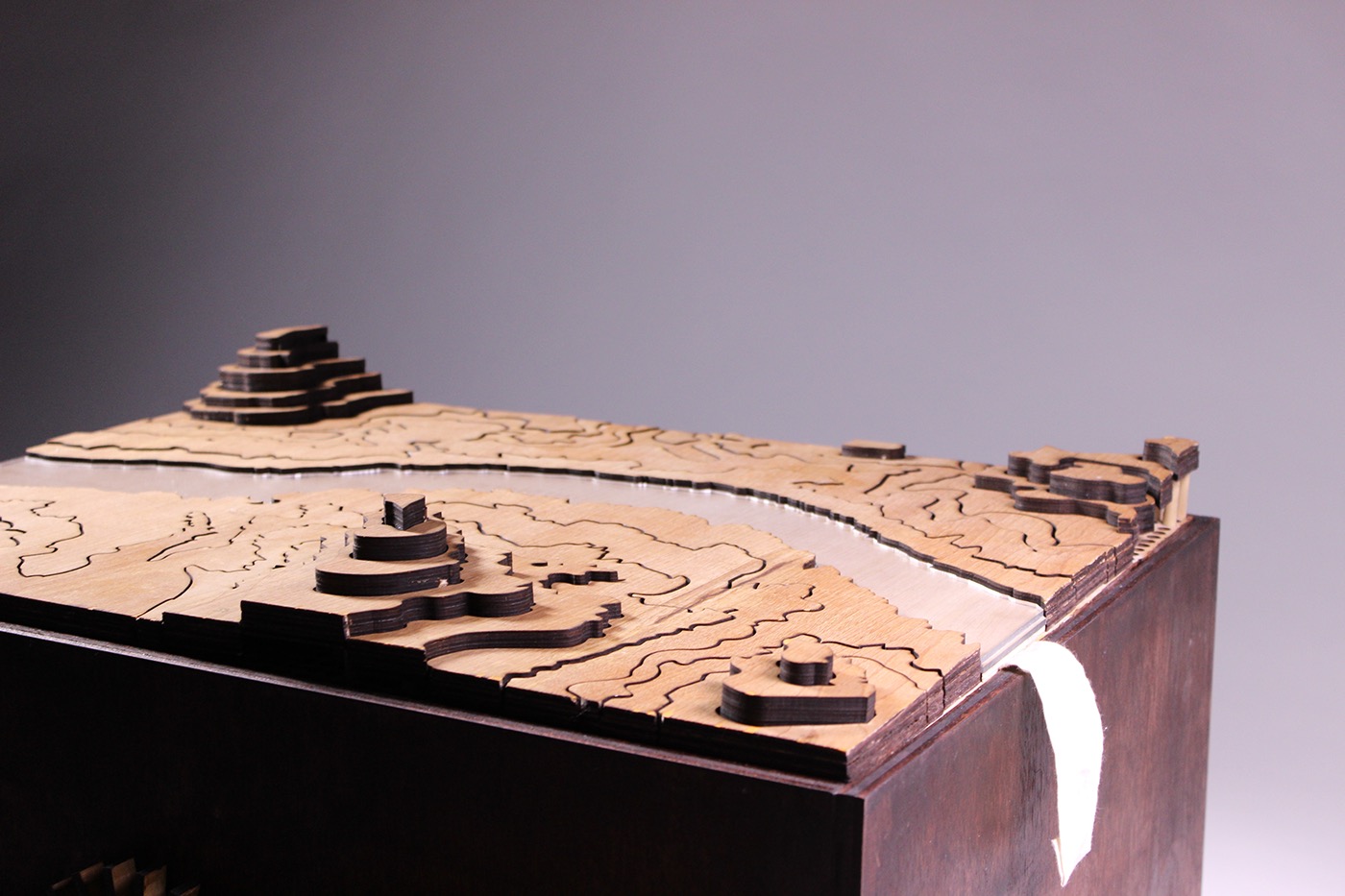
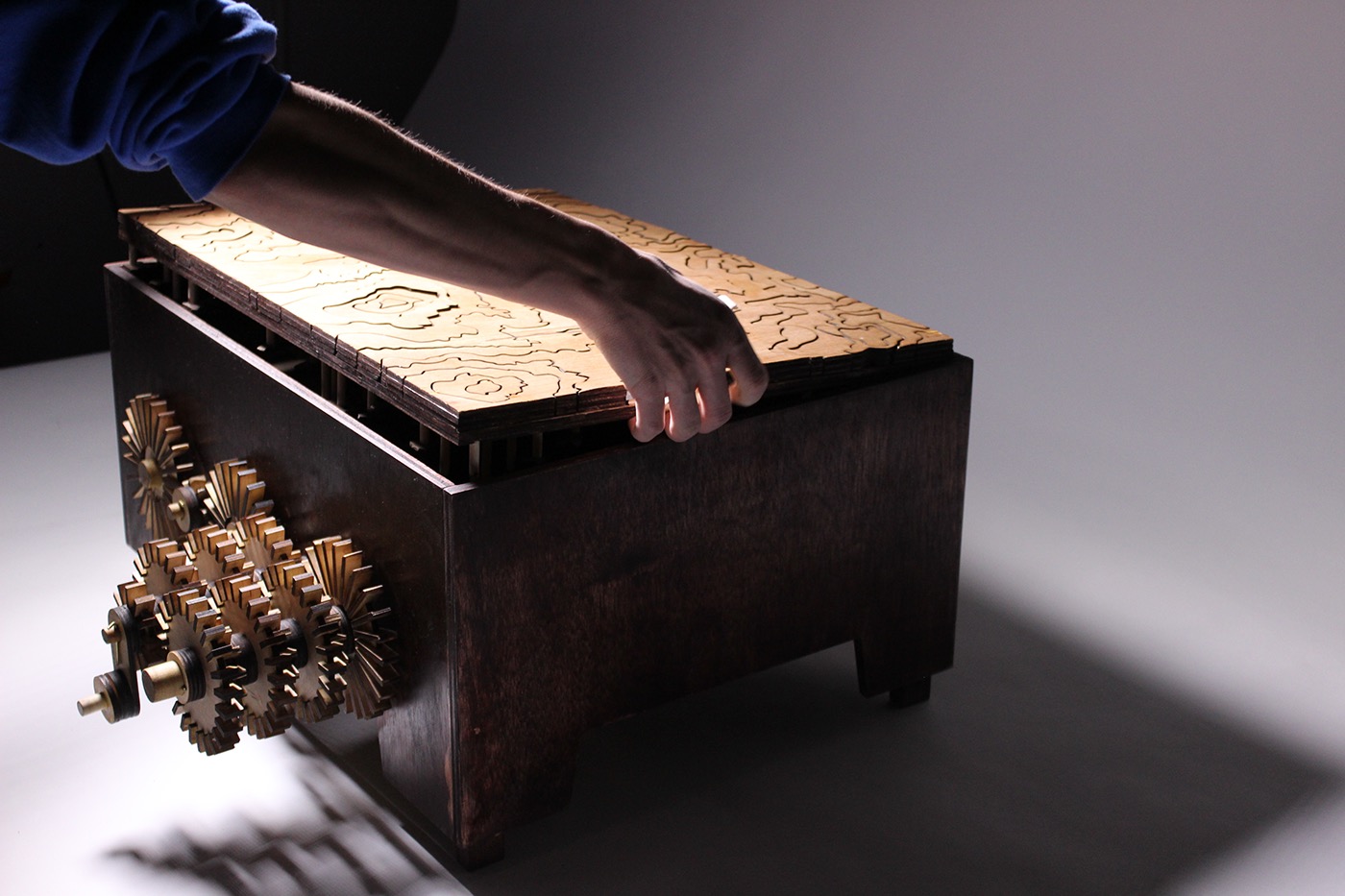
The map includes two handles that allow the map to be lifted for inspection and maintenance of the internal mechanisms.

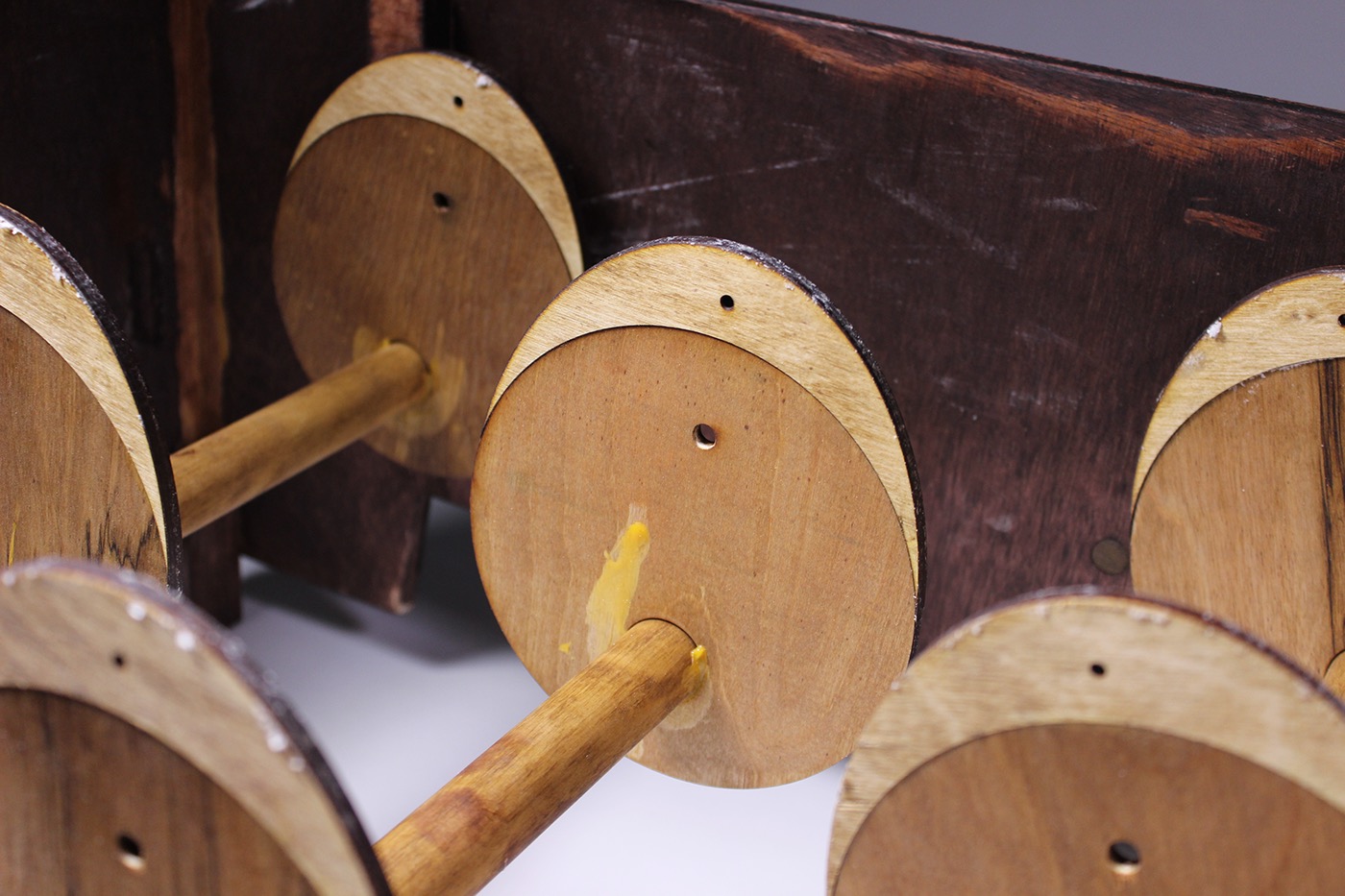
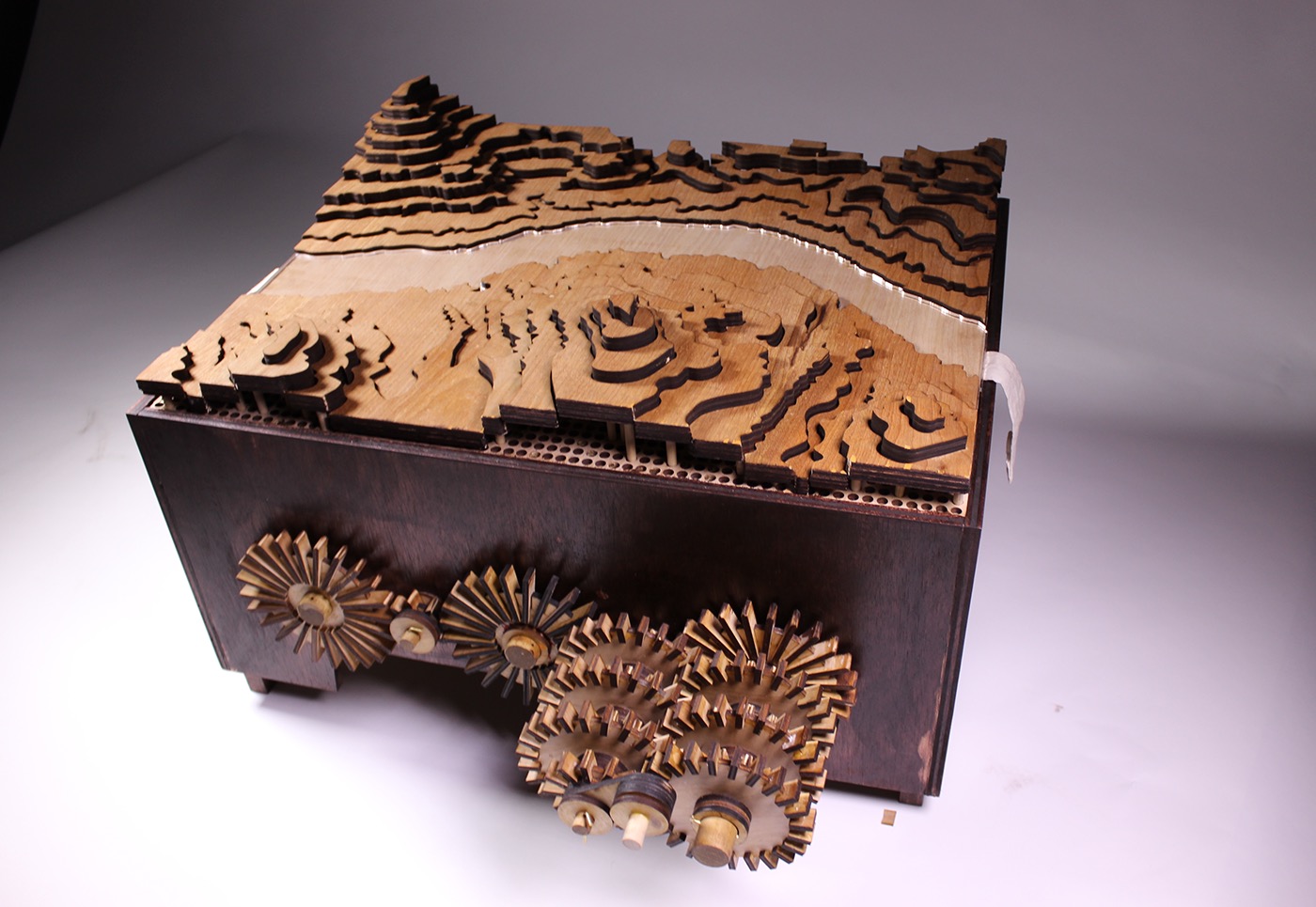
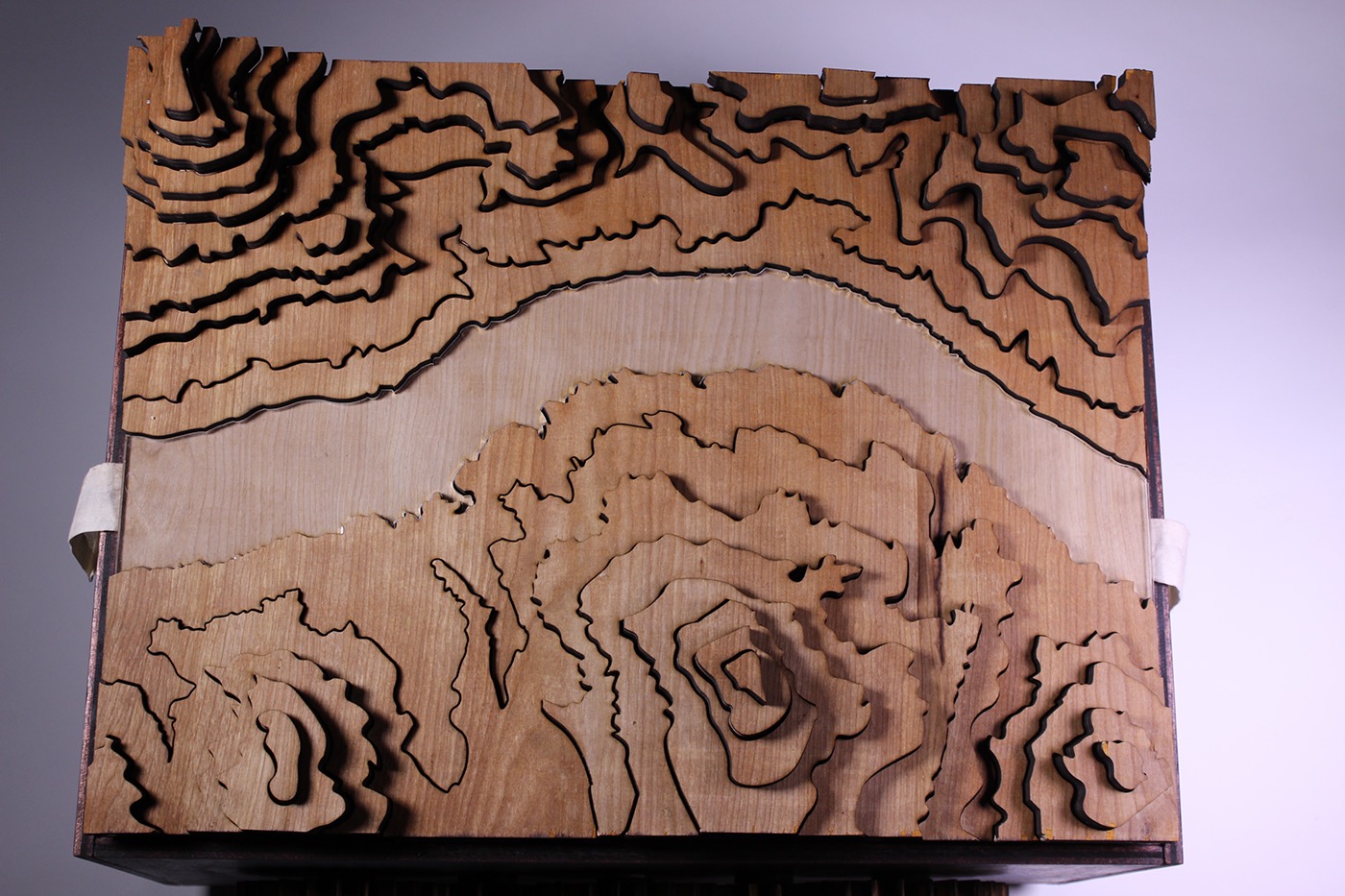
The map at full height stands just at 4 inches tall at its highest point.
